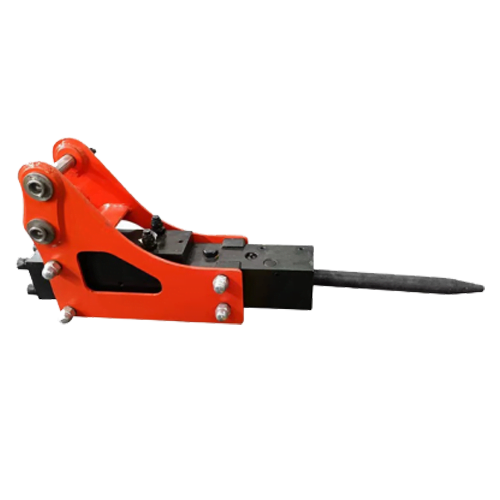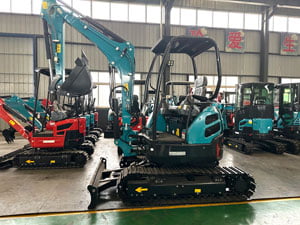I’m thrilled to have you here! Before we dive into the content, I’d love for you to join me on my social media platforms. It’s where I share extra insights, engage with an amazing community, and keep you updated on the latest. Here’s how you can stay connected:
📘 Facebook: Connect with me on Facebook
🔗 LinkedIn: Follow me on LinkedIn
▶️ YouTube: Tractor Manufacturer Channel,Excavator Manufacturer Channel
🎥 TikTok: Tractor Manufacturer,Excavator Manufacturer
Now, let’s embark on this journey together! I hope you find the content here insightful, engaging, and, most importantly, valuable. Let’s explore, learn, and grow!
Table of Contents
Introduction


Mini excavators are highly valued in construction, landscaping, and utility work due to their compact size and maneuverability. However, their true versatility comes from the wide range of attachments for mini excavators that enhance functionality and expand their usability across different tasks. As we move into 2025, new innovations and improved designs in attachments continue to boost productivity and efficiency for operators worldwide.
This blog explores the top 10 versatile attachments for mini excavators in 2025, helping you understand which tools can maximize your machine’s performance and adapt to diverse job site challenges.
Why Attachments for Mini Excavators Are Essential
Attachments for mini excavators transform these compact machines into multipurpose workhorses. Rather than limiting usage to digging alone, attachments for mini excavators enable operators to perform demolition, grading, drilling, lifting, and material handling with a single machine.
Choosing the right attachments for mini excavators helps improve operational efficiency, reduces labor costs, and enables businesses to tackle a broader range of projects. In 2025, technological advancements have made attachments for mini excavators more reliable, easier to switch, and compatible with smarter control systems.
Top 10 Versatile Attachments for Mini Excavators in 2025
Here is a list of the top 10 attachments that are widely used and highly regarded for mini excavators in 2025:
- Hydraulic Thumb – Enhances gripping and material handling.
- Auger – Ideal for drilling holes for posts, trees, and foundations.
- Tiltrotator – Allows for 360-degree rotation and tilting of attachments.
- Ripper – Breaks up hard ground and rocky surfaces.
- Quick Coupler – Enables fast and safe attachment changes.
- Hydraulic Breaker – Used for concrete and rock demolition.
- Brush Cutter – Clears thick vegetation and small trees.
- Grading Bucket – Used for leveling and finishing work.
- Trenching Bucket – Designed for digging narrow trenches.
- Compaction Wheel – Compact soil for trenches and backfills.
Each attachment has unique features that enhance specific functions, contributing to the overall versatility of mini excavators.
Table: Comparison of Top Attachments for Mini Excavators
| Attachment Type | Primary Function | Compatibility | Benefits | Common Uses |
|---|---|---|---|---|
| Hydraulic Thumb | Gripping & Handling | Most mini excavators | Improves material control | Demolition, Landscaping |
| Auger | Drilling holes | Varies by size | Fast, precise hole drilling | Fence posts, Tree planting |
| Tiltrotator | 360° rotation & tilting | Select models | Enhanced positioning & flexibility | Complex digging, Precise grading |
| Ripper | Breaking hard ground | Universal | Effective in rocky soils | Ground prep, Excavation |
| Quick Coupler | Attachment changing | Standardized | Saves time & increases safety | All attachment operations |
| Hydraulic Breaker | Demolition | Heavy-duty mini excavators | Powerful rock & concrete breaking | Demolition, Quarry work |
| Brush Cutter | Vegetation clearing | Compatible models | Cuts brush & small trees | Land clearing, Forestry |
| Grading Bucket | Leveling & finishing | Universal | Smooth surface finishing | Landscaping, Roadwork |
| Trenching Bucket | Narrow trench digging | Most mini excavators | Precision trenching | Utility installation |
| Compaction Wheel | Soil compaction | Select models | Compact soil for better stability | Trench backfill, Foundation prep |
This table helps operators and managers compare key aspects of each attachment, ensuring the right choice for specific project needs.
How to Choose the Right Attachments for Mini Excavators


Selecting the appropriate attachments for mini excavators depends on several factors:
- Project Requirements: Begin by thoroughly understanding the scope and specific nature of the tasks you need the mini excavator to perform. Different projects demand different functions—whether it’s digging trenches, breaking concrete, landscaping, grading, or material handling. Clearly defining your primary application helps narrow down which attachments will deliver the best results. For instance, an auger might be essential for drilling posts, while a hydraulic breaker is more suitable for demolition tasks. Considering future project types is also valuable if you plan to use your equipment across multiple applications.
- Machine Compatibility: Attachment compatibility with your mini excavator is crucial to safe and efficient operation. Check if the attachment matches the machine’s size, weight capacity, hydraulic flow rates, and coupling mechanisms. Attachments that are too large or heavy can overload your excavator, potentially causing damage or unsafe working conditions. Moreover, hydraulic attachments require the machine’s system to supply adequate flow and pressure. Consulting the manufacturer’s specifications or working with a trusted equipment supplier can help verify compatibility and avoid costly mistakes.
- Attachment Quality: Investing in high-quality attachments made from robust materials like hardened steel or reinforced alloys ensures durability in harsh job site conditions. Superior build quality reduces wear and tear, lowers maintenance frequency, and extends the lifespan of the equipment. While cheaper options might be tempting, they often result in higher long-term costs due to frequent repairs or replacements. Additionally, reputable brands often provide warranties and after-sales support, offering peace of mind for your investment.
- Ease of Use: Operational efficiency greatly improves when attachments can be changed quickly and easily. Quick couplers are a popular feature that allows operators to switch tools without leaving the cab, saving valuable time and labor. Hydraulic controls integrated with the machine can also facilitate smoother operation of attachments. When selecting attachments, consider how intuitive and user-friendly they are, especially if multiple operators will use the equipment. Training operators on proper attachment use further enhances safety and performance.
- Budget: Balancing upfront costs with long-term benefits is essential. While premium attachments might require higher initial investment, their durability and versatility often lead to cost savings through increased productivity and reduced downtime. Consider the total cost of ownership, including maintenance, potential repairs, and resale value. For smaller operations or limited budgets, focusing on attachments that offer multifunctionality can provide the best value. Leasing or renting attachments can also be practical for short-term projects.
By carefully evaluating these aspects, operators can maximize the value gained from their mini excavators.
Conclusion
Attachments for mini excavators play a vital role in unlocking the full potential of these machines. The top 10 versatile attachments discussed here reflect the latest innovations and industry trends for 2025, designed to enhance efficiency, precision, and safety.
Whether you’re involved in construction, landscaping, or utility work, investing in the right attachments will improve productivity and adapt your mini excavator to a variety of tasks. Keeping up with technological advancements and choosing quality attachments ensures that your equipment remains competitive and capable in an ever-changing work environment.
FAQ
Q1: Can I use multiple attachments with one mini excavator?
Yes, mini excavators are specifically designed to support quick and efficient attachment changes, particularly when equipped with a quick coupler system. This feature allows operators to switch between multiple attachments on a single machine swiftly, reducing downtime and increasing overall productivity. Whether you need to switch from a bucket to an auger or a hydraulic breaker, these machines can handle a wide variety of tasks without requiring multiple machines on site. Just ensure that the attachments you plan to use are compatible with your mini excavator’s hydraulic and mechanical specifications for safe and effective operation.
Q2: How often should attachments be maintained?
The maintenance frequency for attachments largely depends on how often and under what conditions they are used. Regular inspection is crucial; ideally, attachments should be checked daily before use for signs of wear, damage, or loose parts. Routine cleaning after each use helps prevent buildup of dirt and debris that could impair performance. Lubrication of moving parts should be performed according to manufacturer recommendations, often after every few hours of operation or weekly for less frequent use. Proper maintenance not only prolongs the lifespan of attachments but also enhances safety and efficiency on the job site. Ignoring upkeep can lead to premature failure and costly repairs.
Q3: Are attachments for mini excavators universal?
While some attachments are marketed as universal, their compatibility can vary significantly depending on the manufacturer, model, and size of the mini excavator. Universal attachments are generally designed to fit a broad range of machines, but differences in hydraulic flow rates, pin sizes, and mounting configurations mean it is critical to verify fitment before purchasing or installing any attachment. Consulting your mini excavator’s manual or contacting the manufacturer can help ensure that the attachment will function correctly and safely. Using incompatible attachments can lead to poor performance or equipment damage.
Q4: What safety precautions should I take when changing attachments?
Changing attachments safely requires strict adherence to manufacturer guidelines. Always power off the mini excavator and engage the parking brake before beginning any attachment change. Use the correct tools and equipment for the process to avoid injury. It’s important to work on level ground and ensure that the attachment is securely locked into place before operating the machine. Never rely solely on hydraulic pressure to hold attachments in position—mechanical locks or pins should always be engaged. Wearing appropriate personal protective equipment (PPE), such as gloves and safety glasses, is also recommended. Taking these precautions helps prevent accidents and equipment damage.
Q5: Do attachments affect mini excavator fuel consumption?
Attachments can influence fuel consumption, particularly if they add significant weight or require high hydraulic power. Heavy-duty or high-resistance attachments, such as hydraulic breakers or large augers, increase the load on the engine, causing higher fuel usage. However, proper attachment selection and usage can mitigate unnecessary fuel consumption. For instance, using the right-sized attachment for the task and maintaining hydraulic systems in good condition ensures efficient power transfer. Operators should also avoid excessive idling and operate the machine within its optimal performance range. Regular maintenance of both the mini excavator and its attachments plays a key role in managing fuel efficiency.




